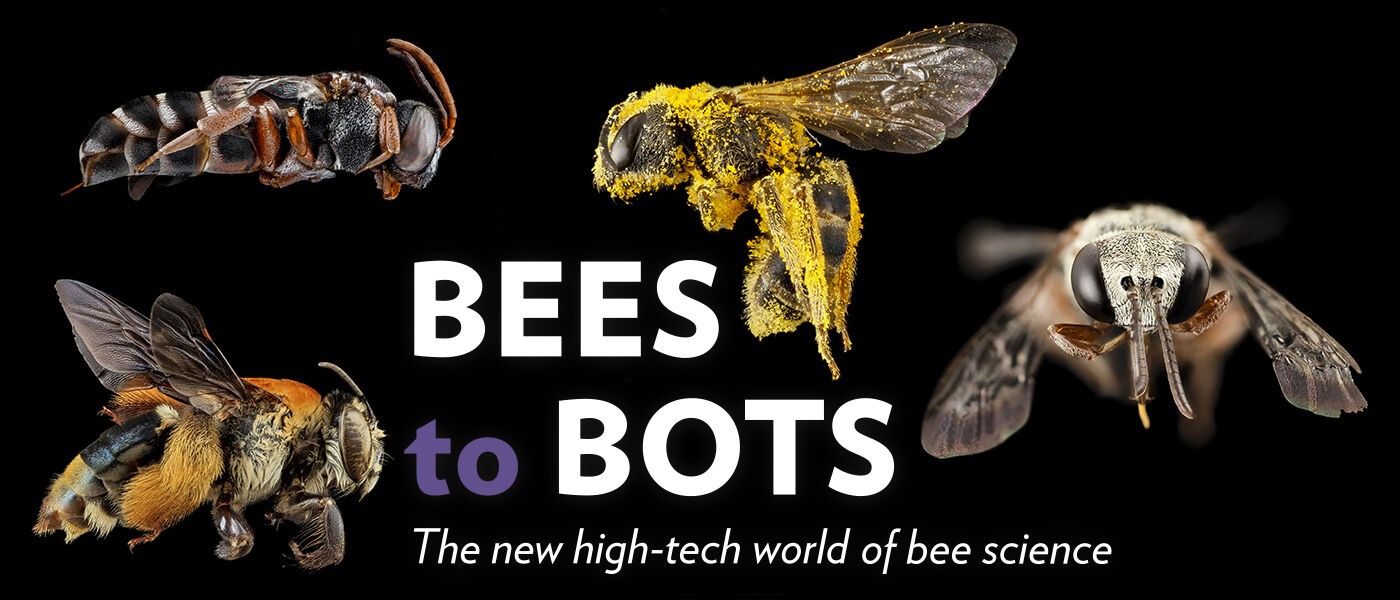Bees to Bots: Experience the Exhibition Online!
Liberty Science Center may be temporarily closed, but that doesn't mean the learning has to stop! For the first time, we're making one of our exhibitions – Bees to Bots – available as a digital experience!
Bees have amazing skills and distinct “personalities”: Some fly 16 miles round-trip for food and communicate by wagging their butts.
Biologists want to understand their behaviors. Robotics engineers want to mimic them. In Bees to Bots, see how scientists are using cutting-edge technology to study, save, and learn from the world’s most important insect.

People have raised honey bees for thousands of years. Beekeepers harvest their sweet honey, and farmers count on them to pollinate, or help fertilize, dozens of important food crops.
Here’s our hive at LSC:
At LSC, we use new technology that helps beekeepers and their bees. Sensors in and near hives measure temperature, humidity, hive weight, bee activity levels, and weather conditions. Apps alert beekeepers to any problems, so they can save sick bees right away.

Diggers, carpenters, leafcutters. These are among the 20,000 known bee species in the world. Wild bees do important work, pollinating wildflowers and crops, but scientists understand surprisingly little about them.
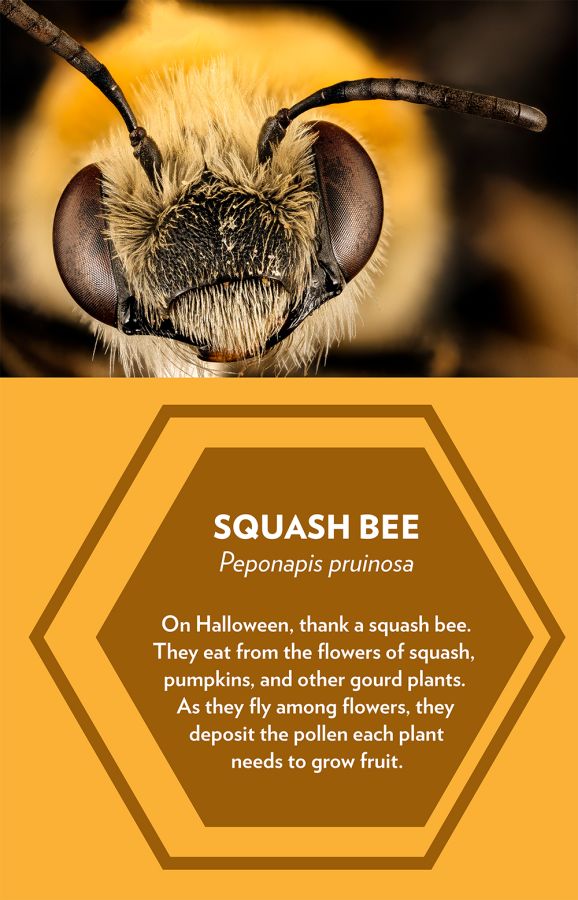
Enter Sam Droege, a biologist in the USGS (United States Geological Survey) Native Bee Inventory and Monitoring Lab. Droege and his lab team take these super-high-resolution photos to document bee specimens. He uses a special camera system, adapted from the military, to capture details down to individual hairs.
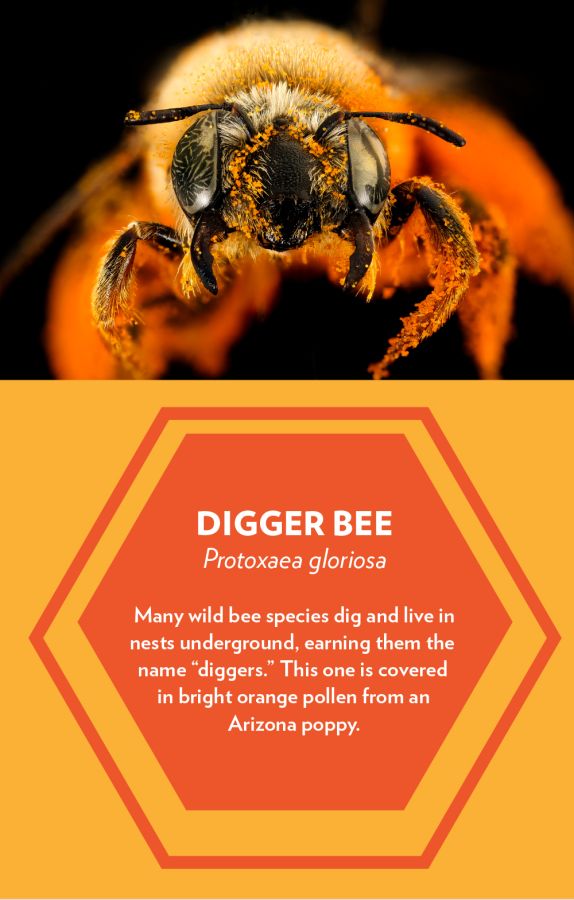
Droege posts the photos to an online field guide. Scientists use it to identify and track wild bees and to help to protect them and their habitats. You can follow them on Flickr at USGSBIML.
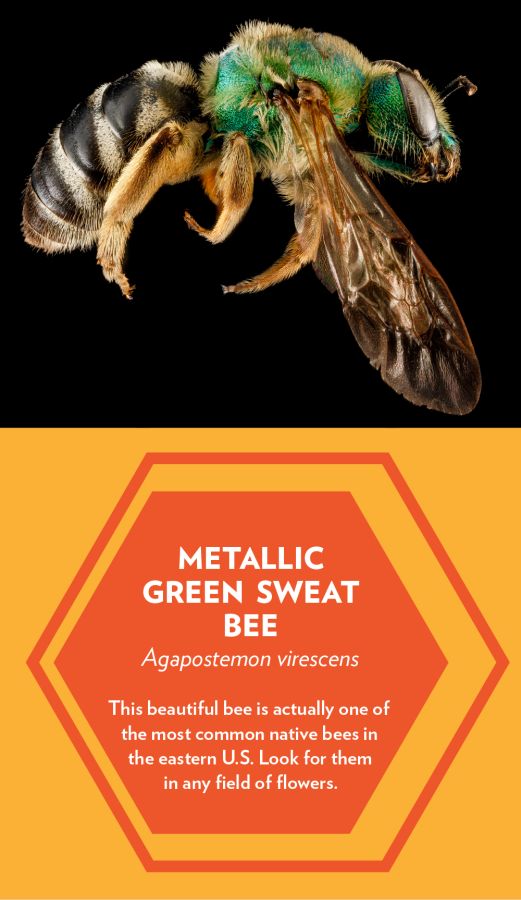
What does a bee do all day? New sensors (and some super glue) are helping answer this question.
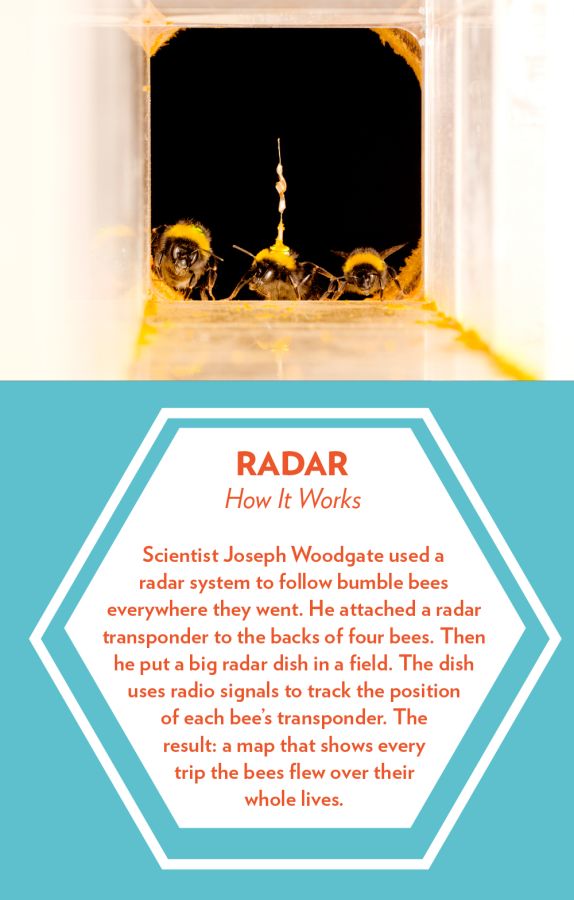
By gluing a sensor on a bee's back, biologists can follow its exact movement over its whole life. Bees turn out to have "personalities.” Some are daredevils, others are cautious, some venture far, and some stay close to home.
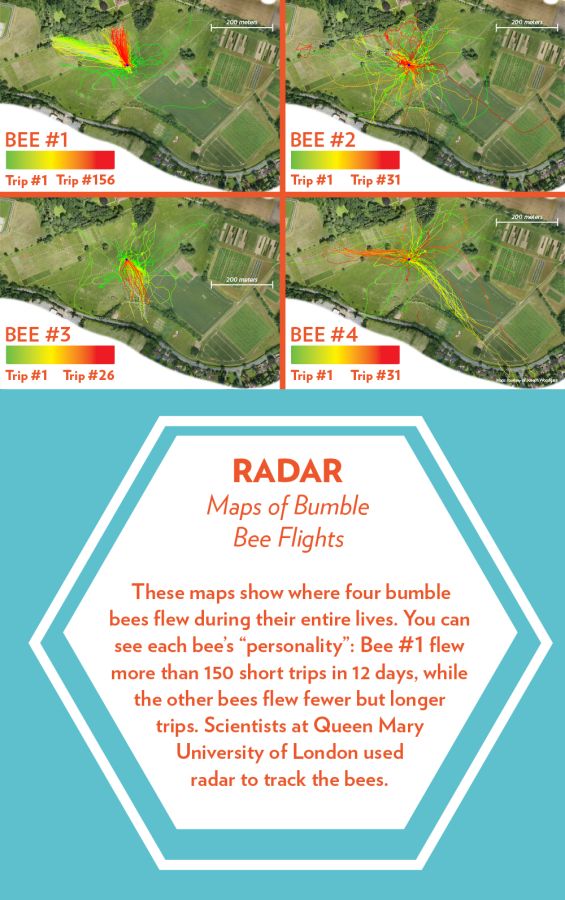
The better we understand how bees act, the better we can spot problems—and help save bees.
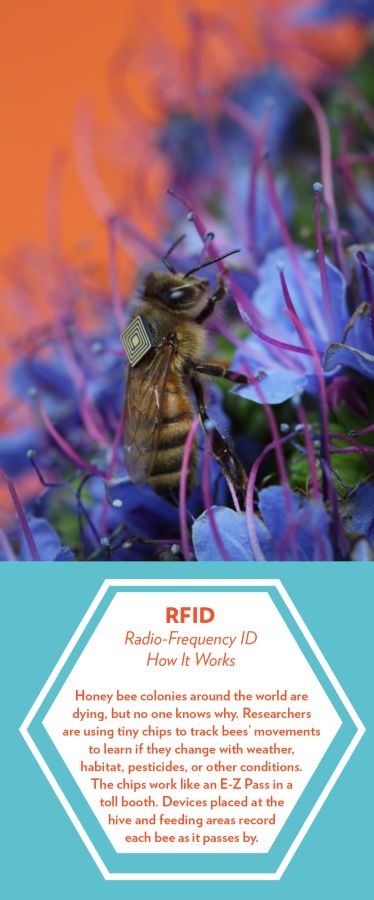

Bees fly better than any robot. They brave bad weather, perch anywhere, and crash and keep going. How do they do it? Biologists and engineers are working together to find out–and are creating new flying robots inspired by bees’ and other insects' amazing behavior.
Insect-inspired robots have many possible uses. They can fly search-and-rescue missions in narrow and dangerous places and hover in the air to measure pollution and other environmental conditions. Scientists even plan to use them as models to investigate how insects move and think.
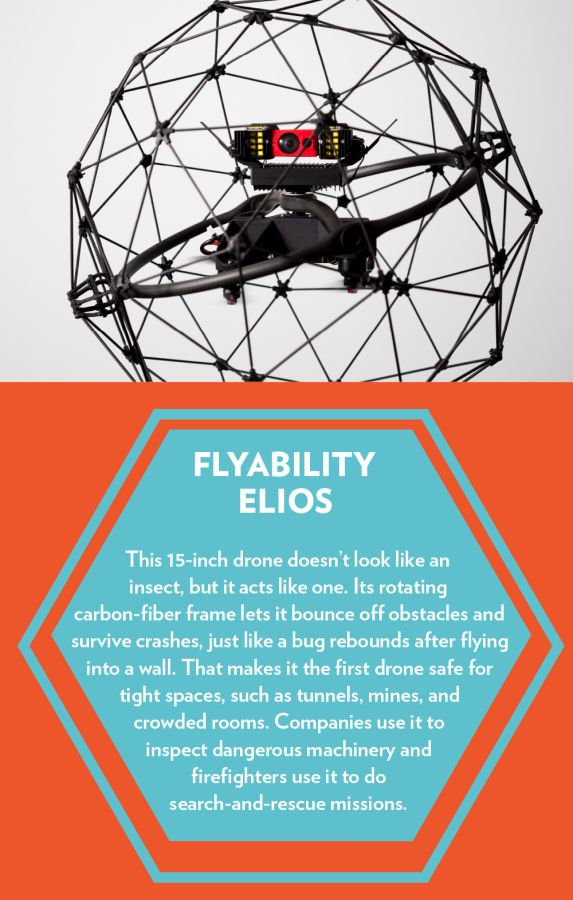

In our exhibition at LSC, you can hear music that comes from an unusual band: human musicians improvising to 40,000 live bees.
Hear the same music at home in this video:
It was created by artist Wolfgang Buttress and bee-communication expert Martin Bencsik for The Hive, a sculpture highlighting the importance of honey bees, at Kew Gardens, London.
